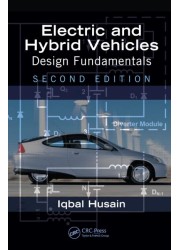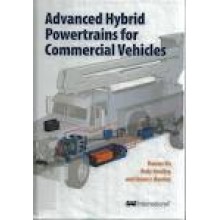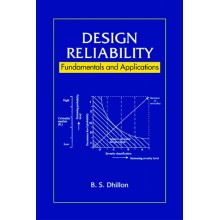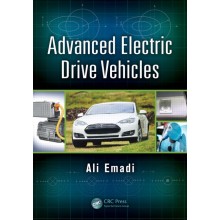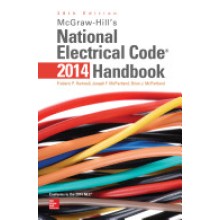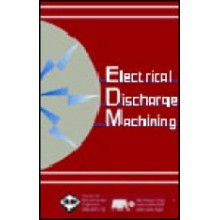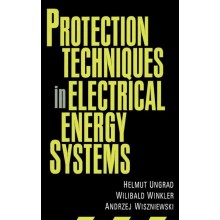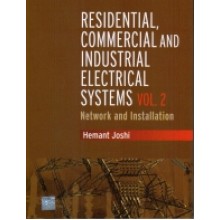Electric and Hybrid Vehicles: Design Fundamentals 2nd Edition
Quantity:
-
Add to Compare
Thoroughly updated to encompass the significant technological advances since the publication of the first edition,Electric and Hybrid Vehicles: Design Fundamentals, Second Edition presents the design fundamentals, component sizing, and systems interactions of alternative vehicles. This new edition of a widely praised, bestselling textbook maintains the comprehensive, systems-level perspective of electric and hybrid vehicles while covering the hybrid architectures and components of the vehicle in much greater detail. The author emphasizes technical details, mathematical relationships, and design guidelines throughout the text.
New to the Second Edition
- New chapters on sizing and design guidelines for various hybrid architectures, control strategies for hybrid vehicles, powertrain component cooling systems, and in-vehicle communication methods
- New sections on modeling of energy storage components, tire-road force mechanics, compressed air-storage, DC/DC converters, emission control systems, electromechanical brakes, and vehicle fuel economy
- Reorganization of power electronics, electric machines, and motor drives sections
- Enhanced sections on mechanical components that now include more technical descriptions and example problems
- An emphasis on the integration of mechanical and electrical components, taking into account the interdisciplinary nature of automotive engineering
As an advisor to the University of Akron’s team in the Challenge X: Crossover to Sustainable Mobility, Dr. Husain knows first-hand how to teach students both the fundamentals and cutting-edge technologies of the next generation of automotives. This text shows students how electrical and mechanical engineers must work together to complete an alternative vehicle system. It empowers them to carry on state-of-the-art research and development in automotive engineering in order to meet today’s needs of clean, efficient, and sustainable vehicles.
Table of Contents
Introduction to Alternative Vehicles
Electric Vehicles
Hybrid Electric Vehicles
Electric and Hybrid Vehicle Components
Vehicle Mass and Performance
Electric Motor and Engine Ratings
Electric and Hybrid Vehicle History
Well-to-Wheel Analysis
EV/ICEV Comparison
Electric Vehicle Market
Vehicle Mechanics
Roadway Fundamentals
Laws of Motion
Vehicle Kinetics
Dynamics of Vehicle Motion
Propulsion Power
Velocity and Acceleration
Tire–Road Force Mechanics
Propulsion System Design
Alternative Vehicle Architectures
Electric Vehicles
Hybrid Electric Vehicles
Plug-In Hybrid Electric Vehicle
Powertrain Component Sizing
Mass Analysis and Packaging
Vehicle Simulation
Battery Energy Storage
Batteries in Electric and Hybrid Vehicles
Battery Basics
Battery Parameters
Electrochemical Cell Fundamentals
Battery Modeling
Traction Batteries
Battery Pack Management
Alternative Energy Storage
Fuel Cells
Ultracapacitors
Compressed Air Storage
Flywheels
Electric Machines
Simple Electric Machines
DC Machines
Three-Phase AC Machines
Induction Machines
Permanent Magnet Machines
Switched Reluctance Machines
Power Electronic Converters
Power Electronic Switches
DC/DC Converters
Cell Balancing Converters
Electric Motor Drives
Electric Drive Components
DC Drives
Operating Point Analysis
AC Drives
SRM Drives
Control of AC Machines
Vector Control of AC Motors
dq Modeling
Induction Machine Vector Control
PM Machine Vector Control
Internal Combustion Engines
Internal Combustion Engines
BMEP and BSFC
Vehicle Fuel Economy
Emission Control System
Powertrain Components and Brakes
Powertrain Components
Gears
Clutches
Differential
Transmission
Vehicle Brakes
Cooling Systems
Climate Control System
Powertrain Component Cooling System
Hybrid Vehicle Control Strategy
Vehicle Supervisory Controller
Mode Selection Strategy
Modal Control Strategies
Vehicle Communications
OSI Seven-Layer Model
In-Vehicle Communications
Controller Area Network
Index
References appear at the end of each chapter. Problems are included at the end of most chapters.
Write a review
Your Name:Your Review: Note: HTML is not translated!
Rating: Bad Good
Enter the code in the box below:
Copyright © 2014 Engineering Standards Bureau. All Rights Reserved.
Developed By Zoom Into Web


